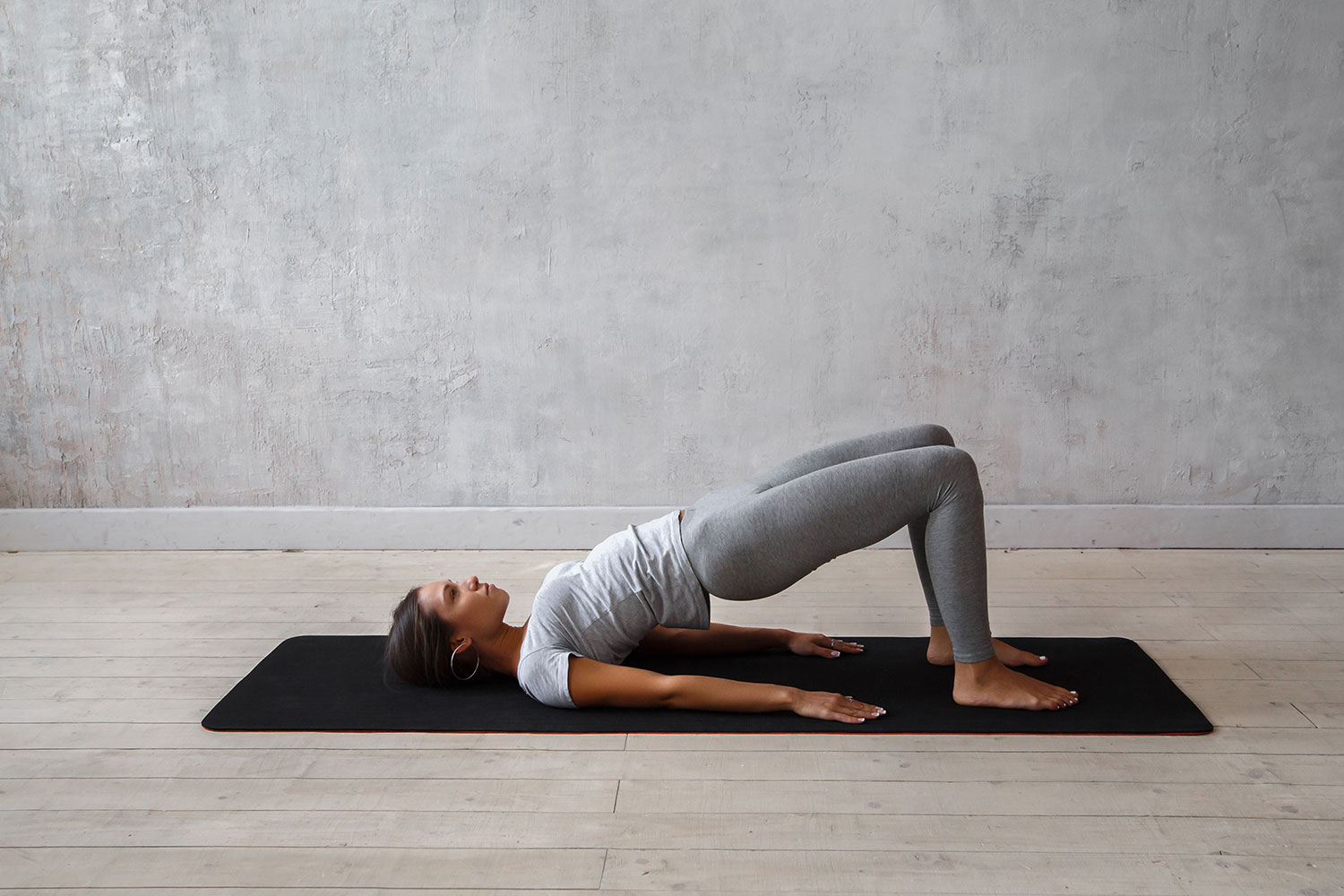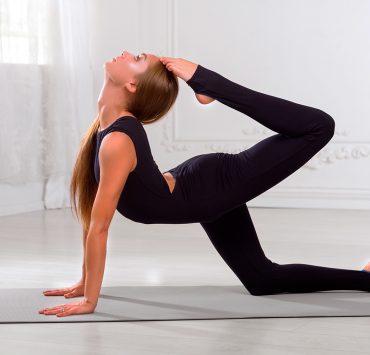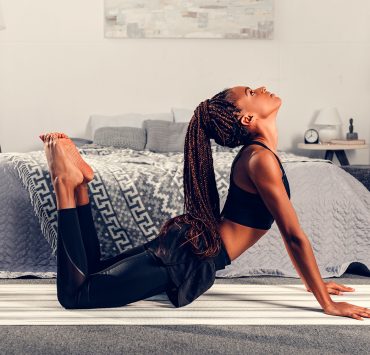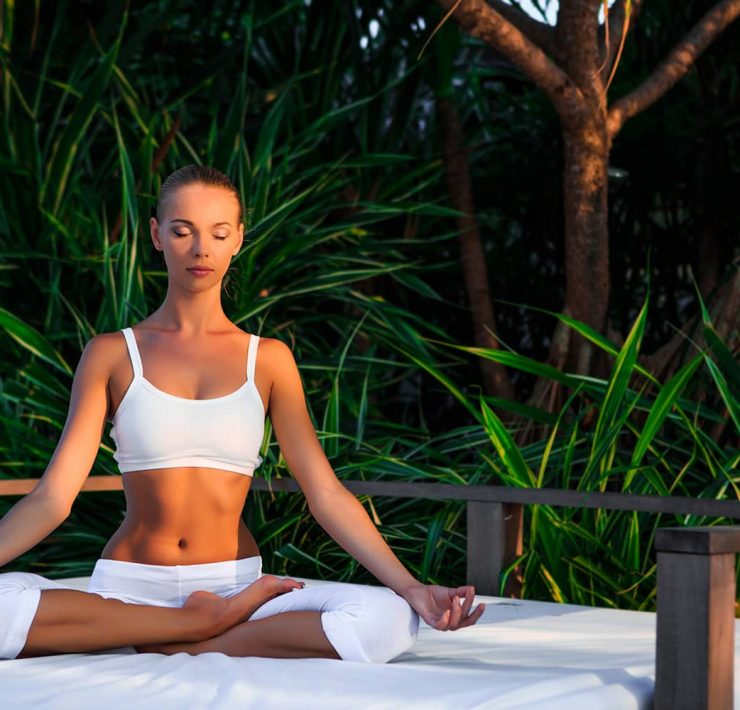
Having been a teacher’s assistant at over 50 yoga teacher…
The psoas is used for the first time when a baby sits up at approximately at 8 months of age. It is the only muscle in the body that connects the spine to the legs. When the muscles contracts it affects several areas of the body: the lumbar spine, pelvis, and hips (The Mind Body Connection in Yoga ). Without thought, the psoas is responsible for helping people move, sit, walk, play sports, and more. In addition to flexion, they also contribute to the inner and external rotation of the hip (How to Stretch and Strengthen the Psoas ). Keeping a healthy psoas is important because it “affects structural balance, muscular integrity, flexibility, strength, range of motion, joint mobility, and organ functioning”.
Location and connections of the psoas

The psoas is made up of a major and a minor muscle. The major muscle connects the femur to the spine and the minor connects the pelvis to the spine. Like all muscles, it is covered by fascia. The psoas muscles are a part of the iliopsoas muscle group, which when working together, is responsible for flexing the hip.
To find the psoas, one would need to look a few inches below the navel, past the abdominals and organs, and each psoas would be located near the spine. The muscles extend to the pelvis and down towards the inner femur. Specifically, the psoas major connects from the T12 to the L4 vertebral bodies.
Benefits of the Psoas
A healthy psoas can provide the following benefits:
1. Comfortable movement the upper and lower parts of the body
2. Balancing the core
3. Stimulation of organs and nerves
4. Create movement in the body
5. Move energy throughout the body
However, when the psoas is tight, weak or imbalanced it can create problems in the body. For example, when the psoas is overworked it can contribute to lower back pain (Journal and McCall 2007). When they are tight, lordosis can occur which is the overarching in the lumbar spine which can contribute to arthritis in the lumbar facet joints (How to Stretch and Strengthen the Psoas ). While hard to see and find in the body, a healthy psoas is crucial to maintaining stability and ease in the body.
Energetics of the Psoas

Chakras are energy centers that are highly referred to in yoga and are responsible for emotions and physical well being. Along the spine exists 7 chakras, starting from the base the chakras and locations are:
1. Muladhara | Root Chakra | First Chakra | Base of the spine
2. Svadhisthana | Sacral Chakra | Second Chakra | Pelvis
3. Manipura | Solar Plexus Chakra | Third Chakra | Near the naval
4. Anahata | Heart Chakra | Fourth Chakra | Upper chest
5. Vishuddha | Throat Chakra | Fifth Chakra | Neck
6. Ajna | Third Eye Chakra | Sixth Chakra | Center of the head between the eyebrows
7. Sahasrara | Crown Chakra | Seventh Chakra | Top of the head
While the psoas directly relates to the first three chakras, the chakras are all connected and if energy is depleted, deficient, or excessive, the imbalance affects the rest indirectly related chakras.
Starting with the root chakra, working with psoas in seated postures can help feelings of security, survival, and family. By working on seated postures, the psoas can help unblock stuck energy.
Yoga postures that incorporate the psoas near the sacral area will help stimulate the tissue and the surrounding area. The second chakra is related to reproductive issues, sexual pleasure, lower back and hip issues, creativity, and pleasure.
The third chakra is located near the navel and is responsible for digestion, emotions, metabolism and personal power. The psoas is located near the area towards the lower part of the spine and yoga postures related to the psoas at this location will assist with self-esteem.
10 Asanas for the Psoas
Yoga postures can help strengthen and stretch the psoas. Before getting started, Ray Long recommends the following tips to practice safely:
● Build the contraction of the muscles slowly
● Contract the psoas only to 20% of its maximum ability
● Allow time for recovery between sessions
● Practice with an experienced teacher
● Consult your doctor before starting any exercise program
Yoga Anatomy instructor David Keil also recommends establishing a relationship with the psoas. Try to become mentally aware of where they are in the body and notice if they tight, weak, or strong and then adapt the practice to fit their needs.
Prior to starting the postures below, be sure to warm up the body to practice safely.
Balasana — Child’s Pose

If the psoas, hip, or back is tight, come into a wide-legged child’s pose. Wide-legged child’s pose is also ideal for larger stomachs or pregnant women. Start in table pose and let the knees come towards the side of the mat. Let the big toes touch and bring the sit bones towards the heels. Lengthen the spine, elongate the neck, and place the forehead onto the mat or on top of a block. Extend the arms in front of the body and keep the hands aligned with the shoulders. For more limber hips, knees can come together.
Child’s pose should be held for three breaths or longer.
Child’s pose helps create grounding for the root chakra.
Virabhadrasana II — Warrior 2 Pose

Come towards the center of the mat and the long side of the mat. Extend the arms outward with the palms facing down so the body is in the shape of a T. Step the feet out so the outer edges of the feet are underneath the wrists. Rotate the right foot so the toes point toward the short side of the mat. Externally rotate the right thigh so that knee is facing the same direction of the second toe and bend the knee to a 45 to 90-degree angle. The opposite leg should be straight.
The psoas should be contracted in the bent leg and helps lengthen the lower spine while simultaneously stretching the psoas for the straight leg. Repeat on the left side.
Warrior 2 helps unlock stuck energy the root chakra which the emotions of loyalty, superstition, and instinct are stored.
Urdhva Mukha Svanasana — Upward Dog Pose

Start on the belly. Press the hands underneath the shoulders onto the floor. Press into the hands while lifting the shoulders, chest, belly, hips, thighs, the shins off the mat while keeping the tops of the feet pressed into the mat. Let the head lift higher while relaxing the shoulders and opening the chest.
While strengthening the core, this asana also stretches the hips and the lower part of the psoas.
Upward dog directly affects the third chakra which is responsible for self-esteem.
Vrksasana — Supported Tree Pose

Start in mountain pose with the hands on the hip against a wall. Plant the left foot firmly onto the earth. Rotate the right knee towards the right while trying to get the outside of the leg closer to the wall behind the body. Gradually lift the foot and place it on the inside of the left leg. Become mindful of the hips, if the right hip has become higher than the left, the foot needs to be lowered until the hips are even. Lengthen the spine, lift the abdominals while relaxing the rib cage.
The psoas should be centrally located without tilting excessively forward to backward. While the standing leg is strengthening, the lifted leg is both strengthening and stretching. Since the psoas is working differently on each side, practice on each side equally. Correct any imbalances by becoming mindful of the body.
In addition to strengthening and stretching the psoas, tree pose when practiced properly is ideal for energizing the root chakra.
Paripurna Navasana — Boat Pose

Sit on the mat then bend the knees and plant the feet onto the floor. Place the hands on either side of the hips, lengthen the spine while lifting the chest and lift the legs so the thighs are 45 to 50 degrees relative towards the floor with the legs straight. Lift the arms and stretch them towards the front of the mat. To modify, knees can be bent or the palms stay pressed into the floor while still working the core and opening the chest and extending the spin.
While simultaneously working the abs, boat pose will also strengthen the psoas isometrically.
Purvottanasana — Upward Plank Pose

Start by sitting on the mat. Plant the feet hip distance apart in front of the body with the ankles underneath the knees. Place a block between the thighs. Place the hands behind the back. Lift the hips. The hamstrings and glutes should be activated.
Upward plank will help strengthen the psoas major and iliacus.
Baddha Konasana — Cobbler’s Pose

Sit on the floor and create a natural tilt forward with the pelvis. If it is difficult, sit on top of a blanket to help create the forward tilt. Bring the bottom of the feet together. Engage the psoas by placing the hands on the knees while attempting to draw the knees upwards. The resistance will help flex the psoas and externally rotate the hips. Extend through the spine and keep the shoulders above the hips. Close the eyes and become mindful of any imbalances in the body to adjust or adapt to.
The psoas and surrounding tissue are stimulated in Baddha Konasana affecting the second chakra. It can also assist in bladder issues, menstruation, sexual energy, and pregnancy.
Setu Bandha Sarvangasana — Half Bridge Pose

Backbends require the full extension of both hips. If the psoas is tight or has not been warmed up properly, they should be stretched first to prevent compression in the lower lumbar spine. For bridge, lie down on the back and plant the feet a few inches away from the glutes with the knees underneath the hips. Feet should be hip distance apart. To ensure proper alignment and ensure the psoas are being worked properly, place one block in between the feet and one between the thighs. Place the arms along the sides of the body, palms facing down. With the gaze towards the ceiling, lift the pelvis starting with the tailbone. This helps keep the pelvis in a posterior tilt. (How to Stretch and Strengthen the Psoas ).
By incorporating yoga postures such as half bridge, practitioners can help lengthen the psoas and counteract the shortening of the muscles that typically occurs from sitting all day. Additionally, gentle backbends help unblock chakras two and three.
Ananda Balasana — Happy Baby Pose

Lie on the back and press the back of the head into the mat. Bring the knees in towards the chest and then separate the knees so they are beside their respective sides of the rib cage. While keeping the knees bent, let the feet stack above the knees. Grab for the outsides of the feet and gently lower the knees closer towards the floor. If practitioners cannot touch their feet, a strap can be placed around the arches of both feet and he or she can grab the straps and gently brings the knees down further.
Happy baby is will help stretch the psoas after intensely stretching them from the previous postures and affects the third chakra which is related to digestion, metabolism, and emotions.
Jathara Parivartanasana — Reclined Spinal Twist Pose

Lie down on the back and bring the right knee into the chest. The back of the head and shoulders should press into in the earth. While keeping the knees in towards the chest, let the arms release out to the sides in a T shape with the palms facing up. Let the right knee release to the left-hand side of the floor while keeping the knee in line with the chest. Take the gaze towards the left-hand. A blanket can be placed underneath the shoulders if the left shoulder has risen off the mat. Hold for 5 breaths or longer and repeat on the left side.
In addition to stretching the psoas, this stretch will also assist in the external rotation of the hip rotators, glutes, IT band and lower spine extensors.
Conclusion
The psoas is a crucial muscle group in the body that not only connects to the upper and lower extremities but is responsible for range of motion, emotional security, movement, and directly relates to lower back pain and postural alignment. By bringing awareness into the psoas during a yoga practice yoga practitioners can not only deepen their practice physically and emotionally but help keep the body healthy.
What's Your Reaction?
Having been a teacher’s assistant at over 50 yoga teacher trainings worldwide, Rebecca Rebecca has a firm grasp on the fine art of yoga and meditation. In her work, she carefully reflects on a vast expanse of knowledge to help others find peace in both body and mind.















It’s really nice to read your post. You’ve written an informative article. I hope You will keep sharing more of your ideas.